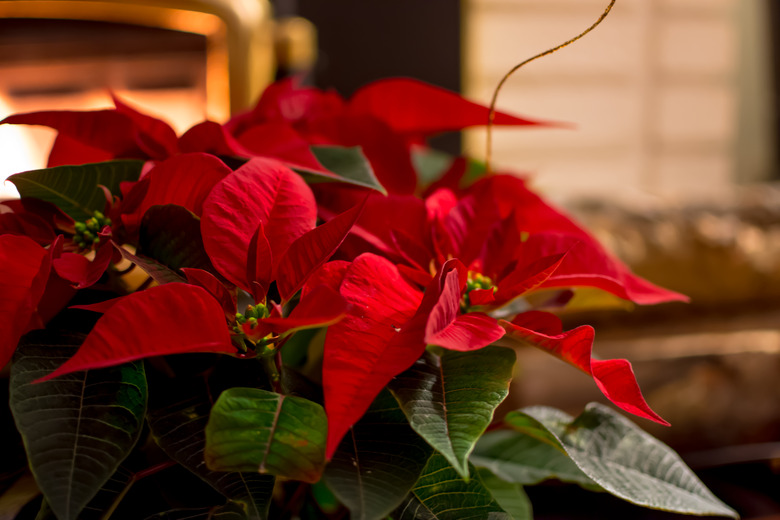My Poinsettia's Leaves Have A Milky Liquid On Them
Poinsettias thrive at an ideal temperature of 60 to 70 degrees Fahrenheit and normally begin to bloom in October, a time frame that contributes to the plant's popularity during the holiday season. They often maintain their bright color well into March. When a milky liquid appears on the leaves of the poinsettia, there is no cause for alarm.
Sap
It is perfectly normal for poinsettia leaves to have a milky liquid on them. This is the sap of the plant, and it is regularly excreted onto the leaves. The white, milky liquid is properly referred to as latex, a term derived from the poinsettia's membership in the Euphorbiaceae family, which also includes the rubber tree (Hevea brasiliensis). Latex, of course, is associated with rubber. The poinsettia is also related to the castor bean (Ricinus).
Rash
Individuals who are sensitive or allergic to latex may develop a rash when handling poinsettias, especially if an abundance of the milky liquid is present on the leaves. The degree of irritation will depend on the person. Gardeners who are unsure as to their sensitivity to this sap should wear gloves and everyone should avoid touching their eyes when working with poinsettias. No part of the plant is edible, yet contrary to popular opinion, the poinsettia is not poisonous.
Toxicity
A 1971 study at Ohio State University discovered that rats that were fed large amounts of poinsettia were not harmed. Additionally, poison control centers and authorities have established that a child weighing 50 pounds would have to consume more than 500 bracts from the plant before there existed even the slightest cause for concern. Discomfort may result from consuming the plant, and simply handling poinsettia leaves with milky liquid on them will not result in a toxic poisoning.
Disease and Pests
The milky liquid oozing from poinsettia leaves is not the result of disease or insect infestation, although the plant is susceptible to root rot diseases that may develop if the soil is too wet or cold. A fungicide can help to control this problem. Pests like white flies and mealybugs may feed on the leaves of a poinsettia but can be controlled by washing them away with a spray of water, rubbing the leaves with alcohol or applying an insecticide.
